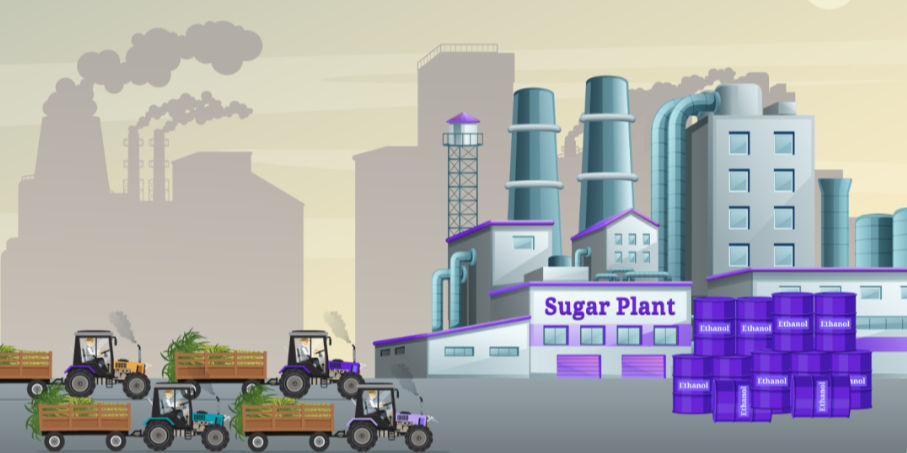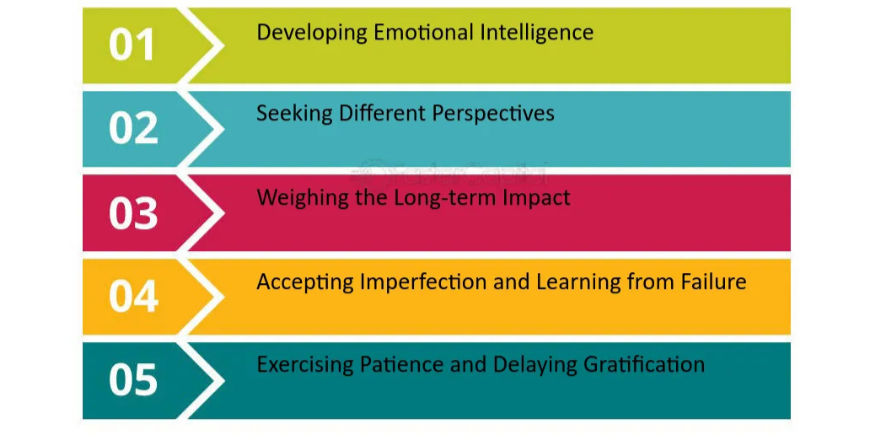Data-Driven Decision Making in Sugar Mills: Why It’s the Future
- hr30522
- Apr 19
- 7 min read
In today’s highly competitive and fast-evolving sugar industry, efficiency is paramount. The key to thriving in such a competitive environment is the ability to make informed, timely decisions based on solid data. Gone are the days when business decisions in sugar mills were based solely on intuition or traditional methods. Thanks to advancements in technology, particularly data analytics, sugar mills can now leverage actionable insights that enhance productivity, streamline operations, reduce costs, and increase profitability.
This shift toward data-driven decision-making is transforming the sugar industry, making it more efficient, sustainable, and profitable. Let’s explore why data analytics and ERP systems are the game-changers for sugar mill operations and how they are shaping the future of the industry.
The Power of Data in the Sugar Industry:
Data is no longer a luxury; it has become a necessity for industries across the globe, and the sugar industry is no exception. Every aspect of a sugar mill’s operations generates data. From production and procurement to distribution and quality control, data is constantly being created, processed, and stored. However, much of this data remains underutilized. By leveraging modern data analytics tools, sugar mills can extract valuable insights from this vast pool of data, leading to improved decision-making, optimized processes, and ultimately, greater operational efficiency.
The use of data analytics enables sugar mills to assess current performance, predict future trends, and identify potential areas of improvement. It empowers managers and decision-makers to make informed choices about production schedules, inventory management, procurement strategies, and resource allocation.

How Data-Driven Decision Making Works in Sugar Mills:
Data Aggregation and Integration :
At the core of data-driven decision-making in sugar mills is the ability to aggregate and integrate data from various departments and stages of production. Enterprise Resource Planning (ERP) systems play a pivotal role in this process by gathering data from the production line, inventory management, procurement, and distribution, among other areas. The integrated data is then organized and made accessible to stakeholders, ensuring that everyone has real-time visibility into the operations of the mill.
Real-Time Analytics Real-time analytics :
Allows sugar mills to track the status of ongoing operations, measure performance against Key Performance Indicators (KPIs), and respond to any challenges or issues as they arise. For instance, if a production line is operating below capacity, managers can quickly identify the root cause—whether it’s a machine malfunction, supply chain disruption, or personnel issue—and take immediate corrective action.
Predictive Analytics:
By using predictive analytics, sugar mills can forecast future trends and make proactive decisions that minimize risk and maximize profitability. For example, predictive models can help forecast demand for sugar, monitor fluctuations in raw material prices, or predict potential maintenance needs. This foresight helps decision-makers plan effectively, optimize inventory levels, and avoid costly disruptions in production.
Descriptive Analytics:
Descriptive analytics focuses on understanding past performance and learning from historical data. This aspect of data-driven decision-making allows sugar mills to assess trends, track production outputs, evaluate energy consumption, and gauge environmental impacts. Managers can leverage this data to identify areas where operations can be optimized for improved performance in the future..
Optimization of Supply Chain and Production :
Processes With insights drawn from data analytics, sugar mills can optimize their supply chain and production processes. For instance, with an ERP system integrated with data analytics tools, mills can track inventory levels in real time, ensuring that there is no overstocking or understocking of raw materials. Predictive analytics can also identify inefficiencies in production, enabling mills to streamline their processes, reduce energy consumption, and cut waste.
Improved Quality Control and Consistency :
Ensuring consistent product quality is a priority in the sugar industry. Data analytics tools can help sugar mills monitor quality control parameters throughout the production process. By analyzing data from various stages, such as sugar cane harvesting, milling, refining, and packaging, mills can ensure that they are producing sugar that meets or exceeds industry standards. By identifying quality issues early, mills can take immediate corrective actions, reducing waste and ensuring product consistency.
Enhanced Decision-Making for Maintenance:
Another area where data analytics plays a crucial role is in predictive maintenance. Sugar mills operate large, complex machinery that requires regular maintenance. By using data from sensors and equipment monitoring systems, mills can track the health of machinery and predict when maintenance is needed. This proactive approach to maintenance reduces unplanned downtime and extends the lifespan of equipment.
Energy Management and Cost Reduction:
Energy costs in sugar mills can account for a significant portion of operational expenses. Data-driven decision-making enables sugar mills to monitor and optimize energy usage throughout the production process. By analyzing energy consumption patterns, mills can identify areas where energy efficiency can be improved. In turn, this reduces operating costs and lowers the environmental impact of production.

Benefits of Data-Driven Decision-Making in Sugar Mills:
1. Improved Operational Efficiency:
By using data to monitor and optimize processes, sugar mills can achieve higher levels of efficiency. Operational bottlenecks can be identified and addressed in real-time, minimizing downtime and reducing waste. ERP systems integrated with data analytics provide a 360-degree view of operations, empowering managers to make informed decisions that enhance productivity.
2. Enhanced Cost Management:
The sugar industry is highly competitive, and controlling costs is essential to maintaining profitability. Data-driven decision-making helps sugar mills to better manage their costs, from raw materials and energy consumption to labor and transportation. With actionable insights from real-time data analytics, sugar mills can optimize their spending and improve their bottom line.
3. Increased Profitability:
Data-driven decisions enable sugar mills to increase profitability by improving both operational efficiency and resource utilization. Predictive analytics helps mills forecast demand more accurately, ensuring that production aligns with market needs. Additionally, by reducing waste and optimizing supply chains, mills can lower costs and improve margins.
4. Better Risk Management:
Risk management is a critical concern for sugar mills, particularly with the volatility of commodity prices, weather conditions, and operational disruptions. Data analytics enables mills to assess and mitigate risks by providing real-time insights into potential challenges. By identifying emerging risks early, sugar mills can take proactive steps to avoid costly disruptions.
5. Sustainability and Environmental Impact:
Sustainability is an increasingly important factor in the sugar industry, both from an environmental and regulatory standpoint. Data analytics can help sugar mills monitor and improve their sustainability efforts. By tracking energy consumption, waste production, and water usage, mills can reduce their environmental footprint. This also helps them comply with environmental regulations, avoid fines, and promote eco-friendly practices to consumers.
6. Improved Customer Satisfaction:
By ensuring that production meets demand and maintaining consistent product quality, sugar mills can improve customer satisfaction. With data-driven insights into customer preferences and demand patterns, mills can optimize production schedules, minimize stock outs, and ensure timely deliveries, leading to stronger customer relationships and increased loyalty.
Challenges and Considerations for Implementing Data-Driven Decision-Making:
Despite the many advantages of data-driven decision-making, the implementation of data analytics and ERP systems in sugar mills is not without its challenges. Some of the key challenges include:
Data Quality and Integration For data analytics to be effective, the data must be accurate, complete, and consistent. Sugar mills need to ensure that their data is clean and integrated across all departments. This requires investing in modern ERP systems and ensuring that they are capable of integrating data from all stages of the production process.
Staff Training and Change Management Transitioning to data-driven decision-making requires a cultural shift within the organization. Employees need to be trained in the use of new technologies and systems. Additionally, there may be resistance to change, particularly from staff who are used to traditional decision-making processes.
Cost of Implementation Implementing advanced data analytics and ERP systems requires significant upfront investment. Smaller sugar mills may struggle with the cost of implementation. However, as technology becomes more accessible and affordable, the return on investment from data-driven decision-making will outweigh the initial costs.
Data Security and Privacy As with any industry, data security is a significant concern. Sugar mills need to ensure that their data is secure and that they comply with privacy regulations. This requires investing in cybersecurity measures and establishing robust data governance practices.

Data-Driven Decision-Making in Sugar Mills:
The future of data-driven decision-making in the sugar industry looks promising. As technology continues to evolve, sugar mills will have access to even more sophisticated tools for data analytics. The integration of technologies such as Artificial Intelligence (AI), Internet of Things (IoT), and Machine Learning (ML) will further enhance the predictive capabilities of ERP systems, leading to even more accurate forecasts and smarter decision-making.
In the coming years, we can expect sugar mills to increasingly rely on data-driven insights to not only optimize production but also to drive innovation and improve sustainability. By embracing data analytics and digital transformation, the sugar industry will be able to overcome current challenges, enhance its competitive edge, and create a more sustainable future.
Enhanced Decision-Making Across All Levels:
Perhaps the most significant advantage of data-driven decision-making is that it empowers managers and executives at all levels to make better decisions. With accurate, real-time data at their fingertips, decision-makers can evaluate performance across various departments and make informed choices about production, marketing, and resource allocation.
Data analytics tools also provide insights into Key Performance Indicators (KPIs) that help assess the health of the entire operation. These KPIs can be used to track progress, identify areas for improvement, and measure success against industry benchmarks. With continuous data collection and analysis, sugar mills can make adjustments on the fly, ensuring that operations remain efficient and profitable.

Conclusion:
In conclusion, data-driven decision-making is rapidly becoming the future of sugar mill operations. By leveraging data analytics and ERP systems, sugar mills can improve operational efficiency, reduce costs, enhance product quality, and make more informed, strategic decisions. As the sugar industry continues to evolve, embracing these technologies will be key to staying competitive and ensuring long-term sustainability. The future of the sugar industry is data-powered, and the time to embrace this change is now.
By understanding and utilizing the power of data analytics, sugar mills can transform their operations and pave the way for a smarter, more sustainable, and more profitable future.
#DataDriven #SugarIndustry #ERPSystems #SugarMills #DataAnalytics #SmartFarming #OperationalEfficiency #PredictiveAnalytics #BusinessIntelligence #SugarProduction #Sustainability #DigitalTransformation #AIinAgriculture #SugarManufacturing #BigData #FutureOfFarming #TechInAgriculture #ManufacturingEfficiency #SupplyChainOptimization #CostReduction #AutomationInFarming





Comments